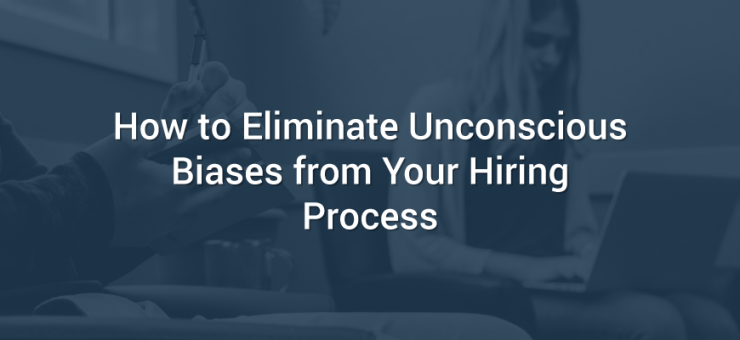“One rotten apple spoils the whole bunch” is not just true when inspecting produce. When you have a biased recruiter, your whole hiring process suffers.
Biases, after all, are the enemy of a great hiring process. When a gatekeeper of your hiring process is biased, or more commonly, unconsciously biased, candidates of great potential can be overlooked.
The problem with unconscious biases is exactly that. They’re unconscious, triggered by the more primitive part of our brains. The amygdala, if you’re curious. It’s responsible for the instant assessment of strange circumstances as friendly or enemy. And the amygdala really likes jumping to conclusions.
Unconscious Biases in the Hiring Process
Everyone has unconscious biases – it’s finding ways to overcome them that’s challenging. The good news is, it’s possible to overcome them. By reflecting on your hiring process, getting unconscious bias training, focusing on job requirements, and measuring effectiveness, you will see an improvement in your hiring process.
Reflecting on the Hiring Process
To me, one of the craziest example of unconscious bias is standing inches farther from one candidate compared to another. This small distance subconsciously shows candidates you’re not as trusting of them. It may even cause a candidate’s confidence to deflate, giving you poorer interview and not allowing a candidate to live up to the potential of their initial screen.
The best way to take a critical eye to your hiring process for bias is by auditing the candidate experience. This means going through the process, as a candidate, from beginning to end. Investigate for yourself: are there barriers to application? Can candidates with different schedules apply for, or even find your open positions? What hurdles might candidates of different economic classes have to overcome to send an application, get a phone screen, or even meet you for an interview?
Understanding the gaps and differences between experiences for candidates of different backgrounds even before their application is sent indicates how your hiring process might be biased, and point you in the direction to fix them.
Unconscious Bias Training
In order to dig into and prevent unconscious biases from spoiling your entire hiring process, bring in some outside help. This can come from an online course, implicit bias test, a consultant, or creating your own training for colleagues. No matter which option you choose, it’s crucial to test for bias, understand the results, and learn techniques to overcome them.
Focusing on Job Requirements
Another surprising example of unconscious bias comes from orchestra auditions. When auditions were conducted blind (meaning the auditioner was put behind a screen and the assessors could not identify them), women were 50% more likely to advance beyond preliminary audition rounds. Using blind auditions allowed the number of women in orchestras to jump 20 percentage points.
The moral of the story? Focus on the skills required for the open position. This can be as easy as blocking the identifying sections of a resume, including contact information and education. Consider even allowing your candidates to prove they have the “chops” to do the job you’re offering with a job audition.
3 Ways to Focus
When creating the hiring process for an open position, there are three ways to ensure the whole process focuses on candidates’ ability to do the job. Solid interview questions, an interview scorecard, and colleague feedback. It’s best to collaborate with all those involved in the hiring process to ensure your interview questions cater to the requirements of the open position. If you need a little extra help, consider learning what interview questions other hiring experts use. Next, use the job requirements to craft an interview scorecard. This scorecard should list the basic job requirements, as well as the “nice to have”’s, and a grading scale. Work with hiring managers to determine what each grade looks like in the hiring process step so everyone identifies candidates’ skills consistently. Last, when assessing candidates answers, use collaboration tools to make sure everyone sticks to the criteria.
Measure for Effectiveness
With any adjustment to your hiring process, there will likely be a learning curve. Allow your team time to get used to the new standards you implement and then assess. Are your hiring metrics better or worse? How does your organization’s diversity score look today versus before your efforts?
Most likely your time to hire rose a bit at first, but as the team gets used to the changes, eliminating biases from the hiring process will become second-nature.











